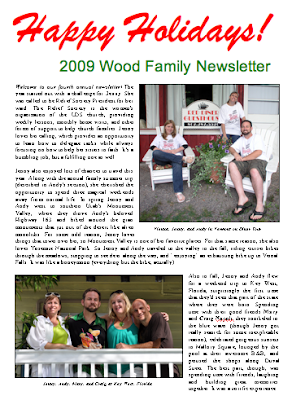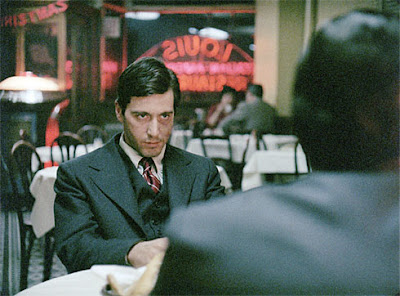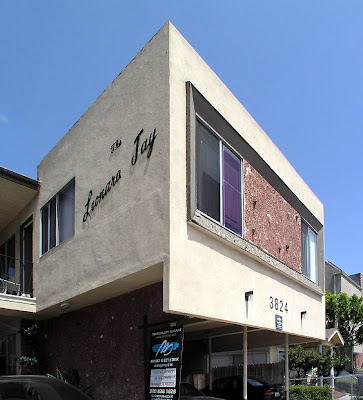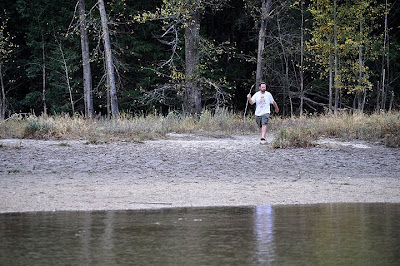Recently, a member of our campus community invited me to share some recommendations on good books to read over the winter break. A simple enough opportunity, right? A chance to share a bit of my mental index, highlight my knowledge of hip trends, and enhance a genuinely pleasant SJSU collaboration along the way. Even so, I dreaded the assignment from the start.
Waking after a fitful night's sleep at around four this morning, I followed the illumination of my iPhone's flashlight app down the stairs and made may way into my personal library. I hoped to find some stimulating books to add to a decent reading list, knowing somehow that I would be disappointed.
Flipping through volumes, many of them still glossy with barely touched covers, I drifted to the late nineties, back when Jenny, Vienna, and I were living in Athens, Ohio.
Ahh, I marveled,
that was a time for reading, and for learning how the experts do it.
The professor who taught my first grad course, David Descutner, transformed much of his house into a rambling library, filling seemingly every corner and hallway with shelf after shelf of smart, challenging books. That guy showed me how a
real intellectual stocks a house. I'm not sure he had a television, but that fellow could boast mini Alexandria of books.
I took a directed readings course with Professor Descutner once; for the life of me, I can't remember the topic. But I do remember how we'd chat for an hour or so about my research and the questions he thought I should explore, and then he'd invariably suggest four or five more books to read, often lent from his own collection. I offer this memory to contextualize my guilt that I haven't been reading as well as I should these past few years.
Writing
City Ubiquitous -- a process that began in earnest back in 2002 but took root in grad-essays five years earlier -- immersed me into a hyper-focused but dreadfully small world of written words. Building and revising chapter after chapter, I plumbed through histories of the department store, encounters with the Parisian arcade, analyses of world's fairs, surveys of the interstate highway, and even biographies of French film director Jacques Tati. Sometimes I devoured books, other times I reviewed chapters, sometimes I scrolled through smudged microfiche articles.
Over the years of writing my own little book, stuffing file folders with highlighted photocopies and developing an appreciation for bibliographic software, I also built a shadow library of pleasures rendered guilty -- not for being enjoyed but for being ignored. I promised myself I would learn about the technologies of "hacking matter" by reading Wil McCarthy, that I'd internalize that introduction to Seurat's
Sunday on La Grande Jatte found in a book I picked up at the Chicago Art Institute, that I'd finally endure Tom Wolfe's
I am Charlotte Simmons, no matter how much his new effort to stay hip had been critically savaged.
I admit it: The last serious fiction I read was Cormac McCarthy's
The Road, and I'm fairly certain I was already two years too late for that meeting of minds to be remotely contemporary. When writing
City Ubiquitous, my fictional detours veered toward classics that I'd either savored before, titles like
The Great Gatsby or
Rendezvous with Rama, or stuff I could justify as useful to my own research, like Émile Zola's
Au Bonheur des Dames (which, as I recall, ended up producing a swell endnote).
So now I'm asked what I'd recommend, and I have precious little of contemporary value to offer. I refuse to cheat by grabbing the last few issues of the
New York Review of Books and thumbing through the pages in search of credibility. That would be worse than downloading an essay from one of those hideous paper-mills (you know -- the ones that promise their papers aren't plagiarized). No, I'll simply come clean and admit that my proposed reading list is fairly ancient. It's good stuff, honestly, but it's none too flashy.
That apologia aside, I propose the following three (four, really) titles:
Two monographs by Susan Sontag,
On Photography and
Regarding the Pain of Others. Sontag's works always convey the mind of an essayist rather than a mere writer (oh, and yes: I generally refer to authors in the present tense after they have died because, after all, their books still live). Reading these monographs, I remember my former office mate Phil Wander's discussions of "the essay" as a literary form rarely seen among the ponderous piles of academic prose that fill our journals and volumes. Sontag's essay examine visual culture in ways that unify high theory, globe-trotting history, insightful anecdote, and arch criticism. Each sparkles with wit and passion and humor, like one of those brilliant dinner guests you meet from time to time, someone whose library is so much bigger than yours. You may feel guilty by the imbalance of the meeting (certainly
I do), but you'll feel ennobled too.
John R. Stilgoe's Outside Lies Magic is a nearly perfect collection of essays that build to a coherent argument for the need to sharpen our acuity about the human-made world around us. I return to his book often to borrow illustrations about how the built environment consists of layer after layer of patina that can be scraped away through physical or mental means, revealing more than mere history as an intellectual exercise but rather the means to encounter bygone modes of life that shimmer like William Gibson's
semiotic ghosts (it's pretty much a rule in Woodland Shoppers Paradise that I cite William Gibson once every couple months).
Outside Lies Magic encourages readers to become explorers of the "why" of everyday life. One example: Stilgoe says that if you peer into the cabinet under the kitchen sink of an early-twentieth century house, you stand a good chance of finding apple green wallpaper -- the same color found in that era's police stations and asylums. Read the book and find out why.
William Gibson and Bruce Sterling's The Difference Engine is easily one of the most frustrating and mind-tickling books in my library. I re-read it at least every three years, ever confident that
this time I will somehow follow the convolutions of its plot. An essential stop in any tour of the "steampunk" genre that's enjoying a mild resurgence these days,
The Difference Engine may be better termed an epic failure whose plot seems to hurtle even beyond the capable minds of its authors. Regardless of whether the book loses its narrative among the byzantine labyrinth of iterations and allusions, I never tire of the journey.
Gibson and Sterling start with a simple enough question: How would the world have been changed if Charles Babbage had perfected his mechanical computers? In this alternate 1855, historical and literary characters jumble together amid a collision of steam-era technology and Victorian pop culture references. The conclusion cascades forth a terrifying parallel future of the world that ensues from those churning difference engines: a necropolis wherein "Paper-thin faces billow like sails, twisting, yawning, tumbling through the empty streets, human faces that are borrowed masks, and lenses for a peering Eye. And when a given face has served its purpose, it crumbles, frail as ash, bursting into a dry foam of data..." Cleverly satirizing our contemporary surveillance society -- naturally being set in
London --
The Difference Engine is endlessly challenging in the best way.
What would I add? I'll return to that question in a future post.
 Greetings! I've uploaded the 2009 Wood Family Newsletter. If you'd like to take a look, click the link below:
Greetings! I've uploaded the 2009 Wood Family Newsletter. If you'd like to take a look, click the link below:
















































